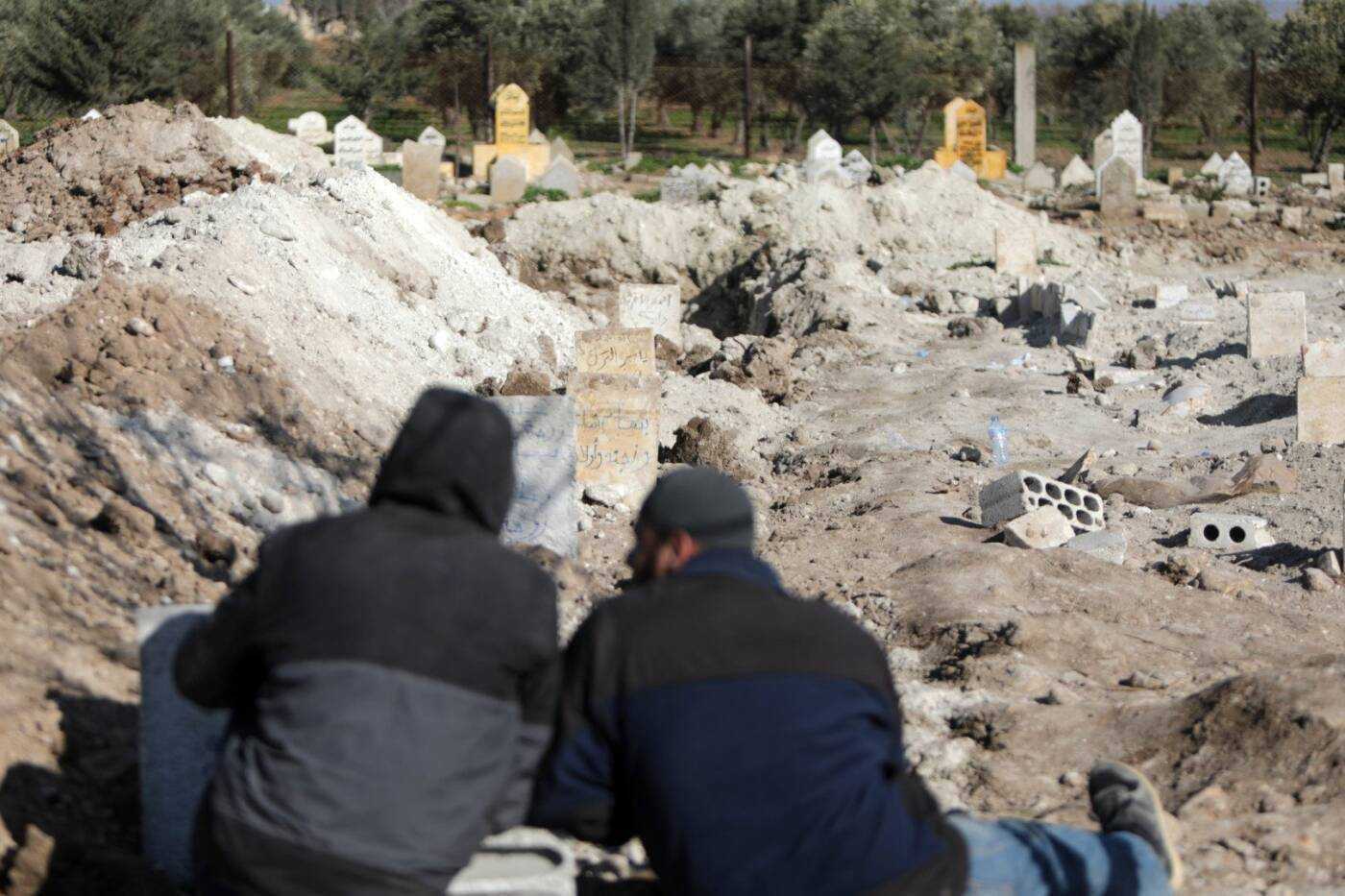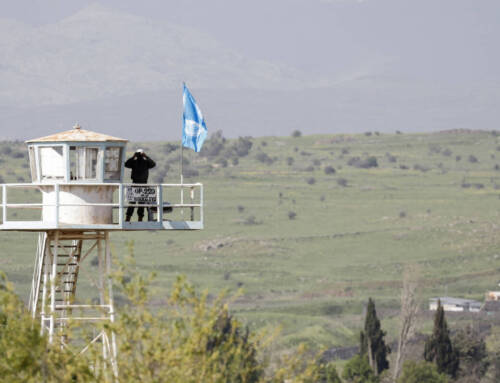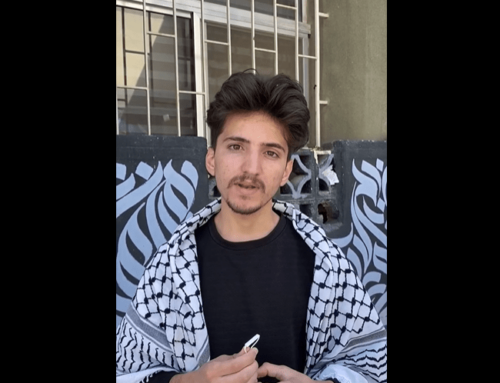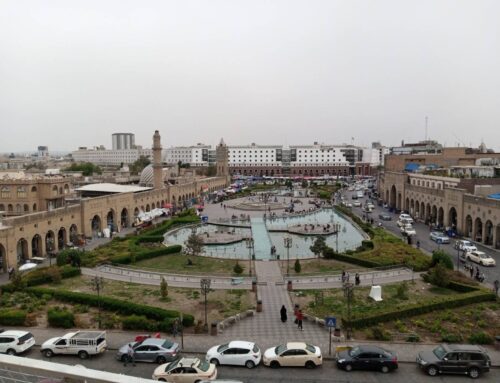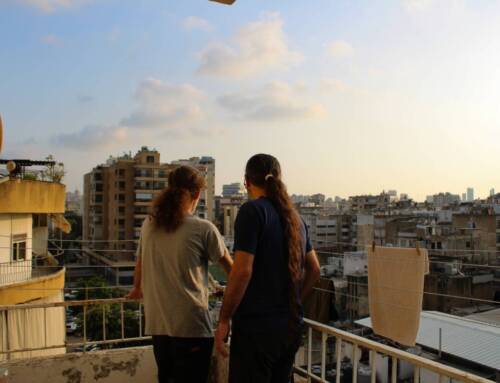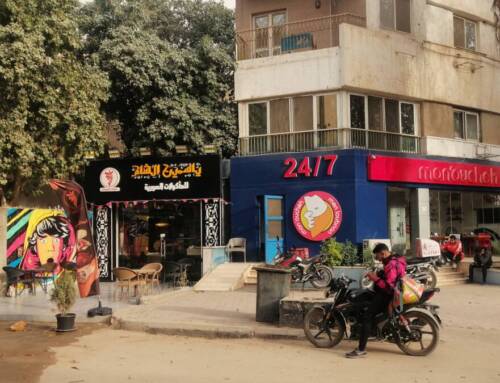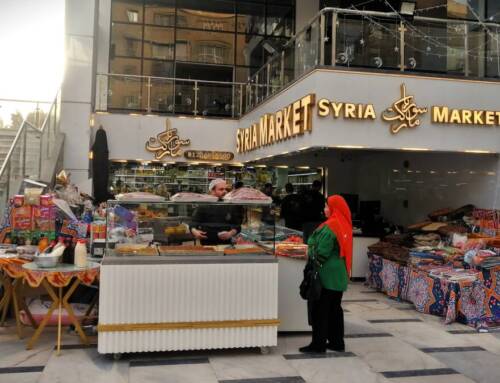The challenge of identifying Syrian earthquake victims
The scale of devastation in Turkey and Syria, speed of burials, and lack of resources for identification of earthquake victims raise concerns that families will struggle to find the remains of their loved ones
15 February 2023
ATHENS – The day after the earthquake, Ali al-Khalaf picked up a shovel and began digging graves. So far, the 30-year-old has helped bury more than 500 people in a mass grave in Atma, northwestern Syria.
“Due to the informality of our work, and the aftershocks, we couldn’t number and name all the graves we dug,” al-Khalaf said. “The civil defense took photos of the victims, for those who may ask about them.”
On Wednesday, the combined death toll from the February 6 earthquake that struck Turkey and Syria stood at 38,474, while work continued to retrieve bodies—and exceedingly rare survivors—from under the rubble. In Syria’s opposition-held northwest, the worst-hit part of the country, the Syrian Civil Defense has recorded 2,777 deaths so far.
The scale of the catastrophe, and the large number of people killed in northwestern Syria—or whose bodies have been sent there from Turkey—has hastened burials, sparking concerns that some of those who died in the earthquake could join the numbers of the more than 111,000 missing or forcibly disappeared people in Syria.
Mass graves
In the aftermath of the earthquake, little aid reached northwestern Syria, which is controlled by the Islamist group Hayat Tahrir al-Sham (HTS) and Turkish-backed Syrian National Army (SNA) factions. With meager resources, people rushed to bury the dead before their bodies decomposed.
“A large share of the victims are being buried in mass graves, and some in cemeteries, depending on the circumstances,” said Munir Mustaf, the deputy director of the Syrian Civil Defense.
At the mass grave in Atma, just across the border from Turkey, there was a shortage of cloth for shrouds to bury the dead according to Islamic rites, and at first volunteers had to dig by hand. “All the machinery was being used for rescuing victims under the rubble, so at the beginning, we didn’t have machinery to dig the graves, but after one day someone donated us an excavator,” al-Khalaf said.
With the UN slow to respond, the 2,800 volunteers of the Syrian Civil Defense were left to fend for themselves to rescue survivors and recover bodies buried under the rubble of an estimated 1,700 destroyed buildings and 6,300 partially destroyed in the northwest.
Mahmoud Abu Omar, a 19-year-old living in the Idlib city of Harem, said it was the civil defense that recovered the bodies of seven of his family members. “I lost my mother, four sisters, one brother and my grandfather. It took three days to recover their bodies under the rubble,” he said. “We took them to a cemetery next to my grandmother’s grave, which we did on our own privately, but my cousins and my aunt had to be buried in a mass grave,” he added.
“There was no space in normal cemeteries,” Abu Omar’s cousin, Asaad al-Muhammad, said. The 25-year-old lost his parents and three young siblings when their house in Besenya, a village near Harem, collapsed. They were buried in Sarmada, where al-Muhammad said the location of his family member’s bodies within the mass grave is well marked.
For earthquake victims who are buried before they can be identified, civil defense personnel “take a picture of all the bodies that are unidentified, the location of the house and any documentation, belongings or clothes, then register and number them, so we can identify them later,” Mustafa said.
Mahmoud Aswad, Executive Director from the NGO Lawyers and Doctors for Human Rights, has been following the identification and burial process across Turkey and Syria. He explained that while the Turkish government has centralized identification and burial efforts, the process has been less unified in northwestern Syria.
“In Syria people know each other, so the neighbors may know how many people were in the building, and there’s a sort of coordination between hospitals, the civil defense, the forensic doctors and the local authorities,” he explained, speaking from Hatay.
Aswad said there has not been enough support for forensic doctors in Syria in recent years. “No importance was given to forensic doctors and that’s a mistake, forensic doctors are key in this work, and they should have had support so they were ready to respond in the case of disasters like this one,” he said.
‘Nobody knows where they are’
In Turkey—where millions of Syrians live, particularly in the southern regions worst-hit by the earthquake—the challenge of identifying all the disaster’s victims is also huge, if different than in Syria.
“In Antakya, the problem is that there are whole families under the rubble and nobody is looking for them or nobody knows where they are,” Aswad said. It is “difficult to know who is under the rubble—if you have no family in Turkey, nobody knows where you are, or who is in this building.”
Aswad said he has met Syrian families coming from the United States, Germany or Saudi Arabia to look for their relatives because all their relatives in Turkey disappeared.
“The biggest problem is that the employees in the area who would normally work on identification of bodies or had the information of how many people live in a building, were also killed, are under the rubble or have been displaced,” he said.
And in Turkey, as in Syria, the dead are being buried quickly. “You are talking about a whole city under the rubble, that’s why there’s a hurry to bury the bodies,” said Mohamed Hasnou, the head of the Assistance Coordination Unit (ACU), a Syrian NGO headquartered in Turkey. “There are not enough fridges for the bodies, and in Antakya or Kahramanmaraş even the hospitals were destroyed,” he said.
Aswad witnessed the identification process at a mass grave in Antakya this week. “There are now mass graves in every city. [Turkish authorities] photograph the bodies, take their DNA, assign them a number and bury the bodies in 24 hours,” he explained. “If the families come and can recognize the photo of their loved ones in the system, they can retrieve the body.”
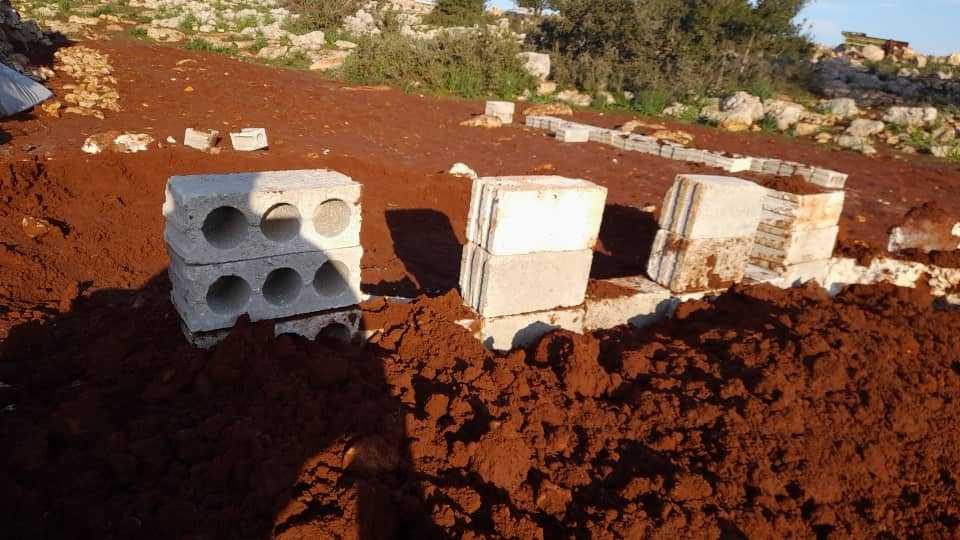
Amar Ali’s brother, wife and four children were buried in a relative’s land in the Aleppo countryside, after their bodies were brought back to Syria from Antakya, Turkey (Courtesy of relatives)
Bodies and borders
While some Syrian earthquake victims are being buried in Turkey, the bodies of others have been sent to northwestern Syria through the Bab al-Hawa crossing with Idlib province.
“There are hundreds of Syrian victims who have been buried in Turkey, as they are from areas controlled by the Assad regime. All the victims that reached us are from northwestern Syria,” said Mazen Alloush, the head of the Bab al-Hawa media office.
In parts of Syria controlled by Damascus, the International Committee of the Red Cross (ICRC) is helping the government identify and bury earthquake victims. Syria Direct reached out to the ICRC, but received no response by the time of publication.
Alloush and Aswad maintained that all the bodies sent to the northwest had been identified and were sent to relatives. But Hasnou said unidentified bodies also crossed through Bab al-Hawa.
According to Alloush, 1,366 bodies had been brought back to Syria through Bab al-Hawa since the earthquake.
Six of those bodies belonged to relatives of Amar Ali, a Syrian refugee living in Antakya. He survived “by a miracle” when the quake hit and his house was only partially destroyed, he said. But his brother Yasser’s house collapsed, trapping him, his wife and four of their children. “Only one of his children survived, 11-year Muhammad, who is with me now,” Ali said.
Ali sent the bodies of his brother and his family back to Syria through Bab al-Hawa. “We buried them in our relatives’ land in the Aleppo countryside, next to the border with Turkey,” he said.
Identification concerns
Syrian organizations that focus on Syria’s missing, disappeared and detained are concerned about how quickly earthquake victims have been buried.
“In some cases, bodies have not been identified by their relatives, or no sufficient documentation of their identity has been taken, but it is very soon to understand how severe the problem is,” said Ahmad Helmi, the co-founder of the Ta’afi Initiative, which supports former detainees.
Yasmin Mashaan, a co-founder of the Caesar Families Association, worried about how the displacement could complicate families’ search for their loved ones. “Many families are displaced in Turkey and northwestern Syria, so they don’t know the families in the region,” she said. “If they died, maybe they don’t know anyone that knows who their relatives are.”
For years, Mashaan and Helmi have been among those lobbying for an international mechanism to be created to unify efforts to identify and reveal the fate of Syria’s missing and forcibly disappeared people. They said identification efforts in the wake of last week’s earthquake underscore its importance.
“If we had such an international mechanism, which we have been calling for for years, it could have done something in this tragedy,” Helmi said.
“The file of missing people in Syria has grown to include victims of the earthquake, which is why the mechanism has to be international and has to cover those buried in Turkey too,” Mashaan said.
“It is the right of the families to know where their loved ones are buried,” concluded Helmi.

